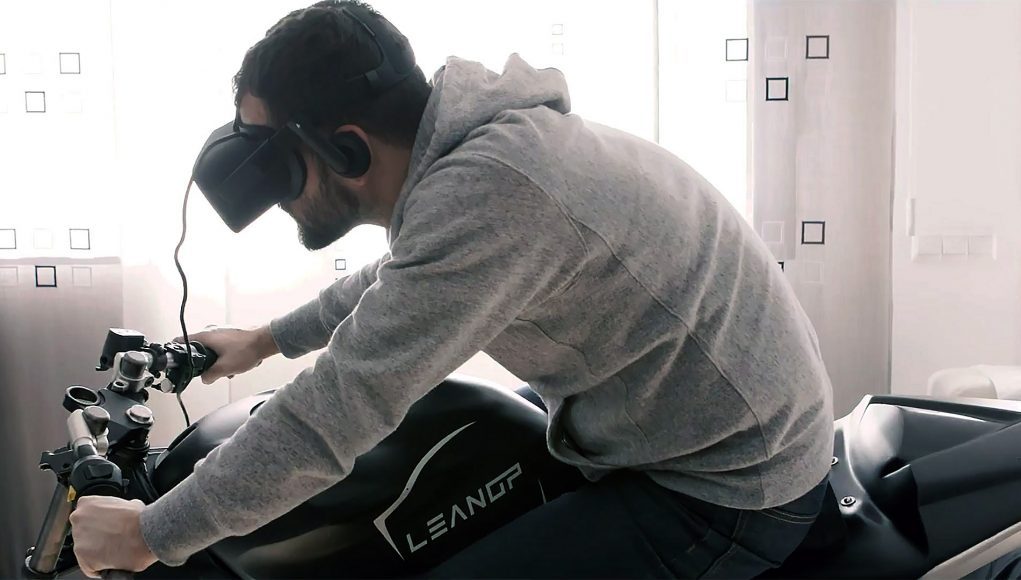Described as the “first affordable and foldable motorcycle simulator,” LeanGP is a dedicated gaming controller and chassis for bike enthusiasts, compatible with various VR-supported gaming platforms. Valencia-based startup LeanGP reached their Kickstarter goal within the first 48 hours of the crowdfunding campaign.
Unlike the breadth of hardware available for car simulation, the selection of consumer-grade peripherals dedicated to two-wheeled motorsport is very limited. There are plenty of bike games, but most don’t offer anything close to realistic handling as the controls are optimised for gamepads; realistic bike simulation is extremely difficult to control without dedicated input devices.
Integrating hardware with realistic motorcycle dynamics is considerably more difficult than cars due to the active influence of the rider’s bodyweight and positioning. This unique interaction between human and machine is complex, and ideally requires body tracking and multiple powerful actuators to simulate the motion characteristics of an entire bike chassis through its various states of acceleration and weight transfer, as seen in this professional 6DoF Cruden simulator.
LeanGP takes a more simple approach, focused on cornering lean, which in turn (sorry) makes it compatible with the simplified controller input of most motorcycle games. The device claims to be ‘plug and play’ with a large number of titles and gaming hardware, calling out various VR headsets including PSVR, Vive, Rift, and even mobile VR headsets. But the truth is, decent VR motorcycle experiences are hard to find; there is only one serious motorcycle sim on PC with good VR support: PiBoSo’s GP Bikes beta (and the associated MX Bikes, but as a motocross sim it is less suitable for this chassis). For PSVR, only Moto Racer 4 (2016) showed some promise as a fun arcade racer, but turned out to be a disappointment with restricted VR functionality.
In order to make the most out of GP Bikes, LeanGP needs to support not just chassis lean, but also a separate steering axis to detect the subtle countersteer that initiates the lean (the prototype had fixed handlebars). In a post on the PiBoSo forum, LeanGP CEO Salvador Felip Llopis indicated that the team was investigating the possibility of separate axes for lean and steer, but the status of this is unclear.
According to the project’s ‘stretch goals’, more nuanced movement could be possible using actuators and force feedback solutions, but this is dependent on the success of the funding campaign. For now, this can be seen as a promising sign of enthusiasm in a unique area of simulation that desperately needs more support from hardware and software developers.







